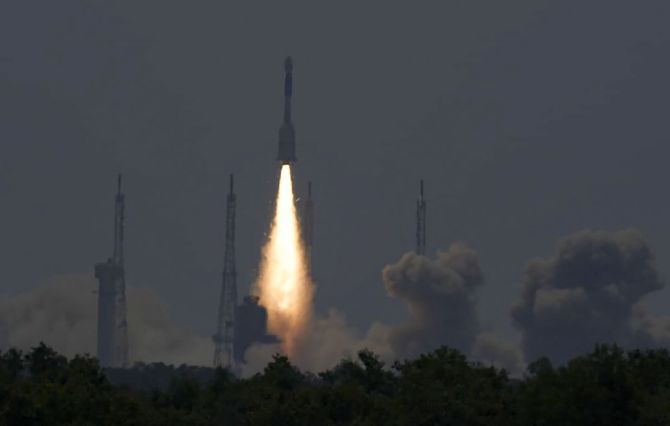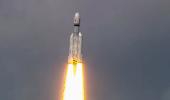A dome-shaped mysterious object has washed up on a remote Australian beach, amid speculation that it could be from a 20-year-old Indian rocket that was used for launching a satellite.

The canister was discovered near the beach in Green Head in Western Australia (WA) about 250 kilometres north of Perth on Saturday.
When contacted by PTI, Indian Space Research Organisation (ISRO) sources confirmed receipt of a formal communication from the Australian Space Agency. However, they did not provide any details.
The bizarre-looking object has been declared a piece of space junk, while national agencies, including the Australian Space Agency, continue working to identify its origin.
"At this time, it is believed the item is space debris and will be managed as such until it can be determined otherwise," Western Australia police said in a statement.
However, a space expert said the object could be from a 20-year-old Indian rocket.
European Space Agency engineer Andrea Boyd said experts believed the item fell from an Indian rocket launching a satellite, the Australian Broadcasting Corporation reported.
"We're pretty sure based on the shape and the size, it is an upper-stage engine from an Indian rocket that's used for a lot of different missions," she said.
"Based on the amount of barnacles, it's probably not the one from this year," she said.
She said it could be 20 years old, the report added.
"But at the same time, when it gets thrown around the ocean it does tend to look older than it would normally."
Boyd said the engine was designed to fall off after the launch.
"It takes a lot of effort to get up to orbit, so the first and second and third stage (engines) usually fall off and end up in the Indian Ocean, so it's probably come from that with the currents and washed up on the beach," she said.
Within an hour of the first media report on the unusual find, many social media users already came up with a theory the object was a piece of space junk from an Indian rocket, the Sydney Morning Herald newspaper reported.
Space experts agreed, with Australian National University astrophysicist Dr Doris Grosse and Flinders University space archaeologist Dr Alice Gorman believing it was likely a fuel cylinder from the third stage of a launch by India's space agency, it said.
Some even theorised the debris could have come from a specific mission -- PSLV-CA C46 -- which launched in May 2019 and dropped some debris in the ocean to Australia's north-west and south-east, the report added.
The police earlier labelled the object as "hazardous" as they worked to identify if there was a risk to the community.
After analysis of the object, the department of fire and emergency services and the Chemistry Centre of WA found it posed no risk to the community.
But Boyd said it was important people did not touch the object.
"It might still have some residual fuel and you just don't want to get people touching that," she said.
Western Australia Premier Roger Cook said the object could end up at the WA Museum.
"I did make the observation this morning that perhaps this will be an addition to the Skylab pieces that we have in the museum and might add to our growing collection of space debris that seems to be collecting in WA," he said.
Space debris -- both man-made and natural -- has a habit of coming down in WA's vast outback, although it is rare for it to be found washed up on the state's 12,895 kilometres of the coastline.
Most famously, the Skylab space station came hurtling back to Earth in 1979, with pieces of the rogue station found in the most remote of outback locations in Balladonia, north-east of Esperance in WA's south.
The local council hit NASA with a USD 400 littering fine, which reportedly remains unpaid.
But scientists with their eyes trained on the skies have also recovered fragments of space rocks which have made it through the atmosphere and slammed into the ground in WA's outback.











 © 2025
© 2025